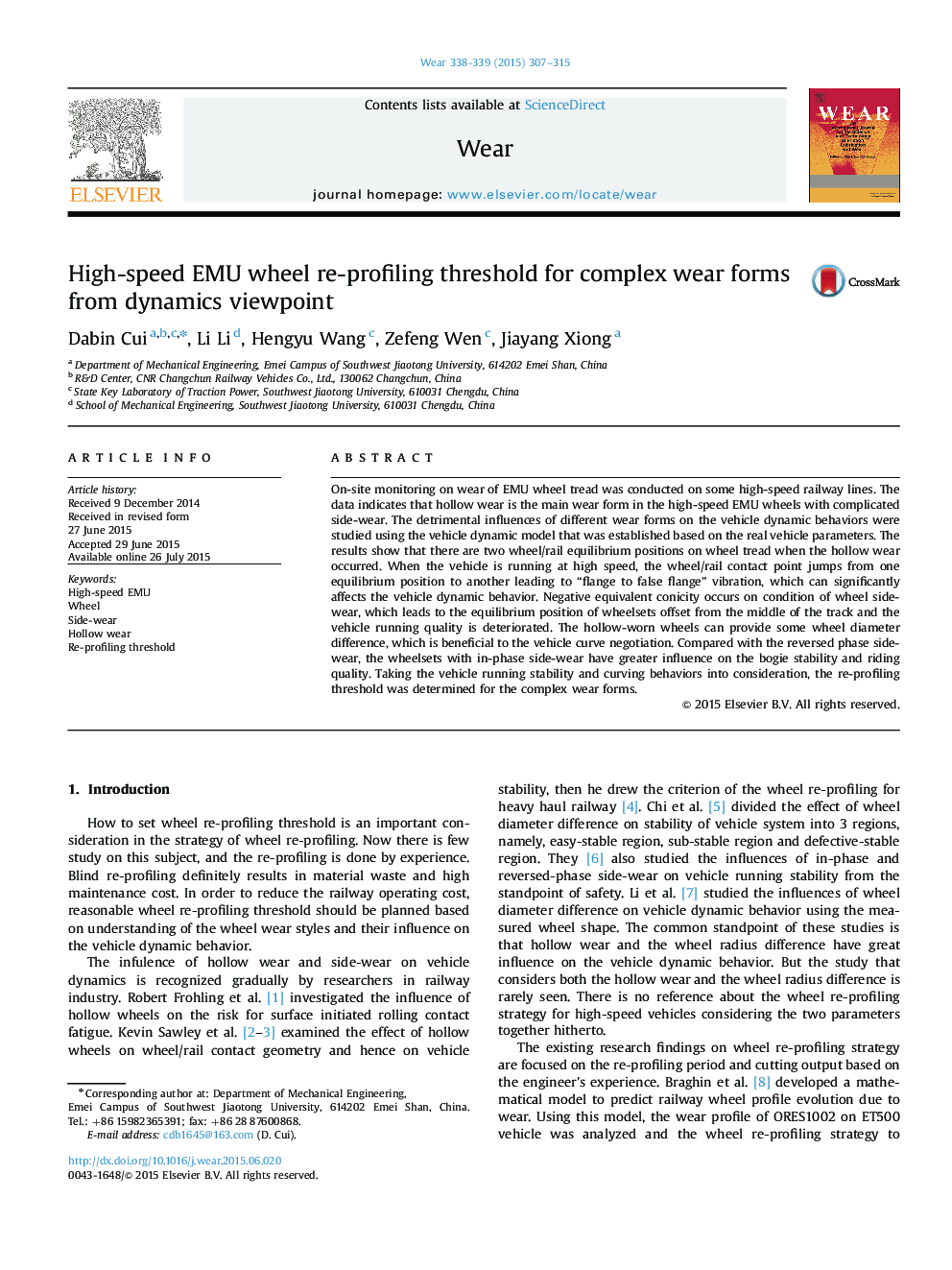| Article ID | Journal | Published Year | Pages | File Type |
|---|---|---|---|---|
| 7004206 | Wear | 2015 | 9 Pages |
Abstract
On-site monitoring on wear of EMU wheel tread was conducted on some high-speed railway lines. The data indicates that hollow wear is the main wear form in the high-speed EMU wheels with complicated side-wear. The detrimental influences of different wear forms on the vehicle dynamic behaviors were studied using the vehicle dynamic model that was established based on the real vehicle parameters. The results show that there are two wheel/rail equilibrium positions on wheel tread when the hollow wear occurred. When the vehicle is running at high speed, the wheel/rail contact point jumps from one equilibrium position to another leading to “flange to false flange” vibration, which can significantly affects the vehicle dynamic behavior. Negative equivalent conicity occurs on condition of wheel side-wear, which leads to the equilibrium position of wheelsets offset from the middle of the track and the vehicle running quality is deteriorated. The hollow-worn wheels can provide some wheel diameter difference, which is beneficial to the vehicle curve negotiation. Compared with the reversed phase side-wear, the wheelsets with in-phase side-wear have greater influence on the bogie stability and riding quality. Taking the vehicle running stability and curving behaviors into consideration, the re-profiling threshold was determined for the complex wear forms.
Keywords
Related Topics
Physical Sciences and Engineering
Chemical Engineering
Colloid and Surface Chemistry
Authors
Dabin Cui, Li Li, Hengyu Wang, Zefeng Wen, Jiayang Xiong,
